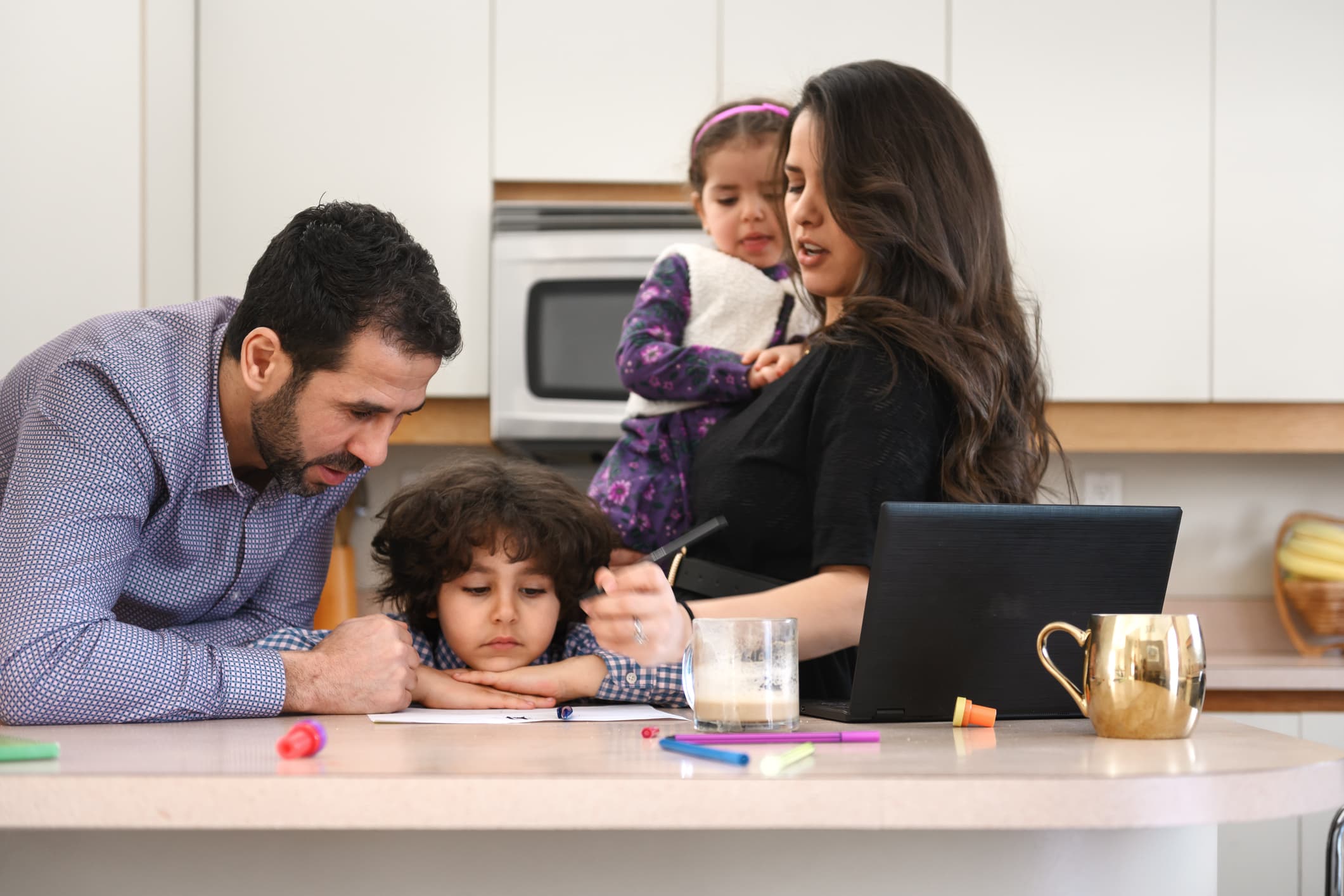
It’s been two months since families with eligible children stopped getting advance child tax credit payments in December.
Many of those families are already struggling again to make ends meet.
Nearly 60% of parents surveyed by ParentsTogether Action, an advocacy group, said that since the checks stopped, they haven’t been able to afford enough food. An additional 22% said that they can no longer afford to meet their families’ basic needs, according to the survey of more than 800 members done in early February.
More from Invest in You:
Small business owners are optimistic, but still face challenges
Inflation is at its highest in 40 years. How raising interest rates could help
This company found a cure for employee burnout: a four-day workweek
“These past two months have been a sort of perfect storm of factors coming together to make life even more difficult,” said Allison Johnson, a campaign director with ParentsTogether Action.
In addition to still dealing with the pandemic, which has upended work and school for families, parents are also being hit with higher prices for everyday items due to the highest inflation seen in 40 years. That’s added extra pressure to their budgets at the same time they’re seeing less money coming in each month.
“All of these other factors have combined to make it just extremely hard for families to get by right now,” said Johnson. About 80% of the families surveyed had annual income of less than $100,000.
Benefits of monthly CTC
The child tax credit was enhanced through the Biden administration’s American Rescue Plan, which was signed into law in March 2021. It boosted the existing child tax credit to $3,000 from $2,000 with a $600 bonus for kids under the age of 6 for the 2021 tax year. It also added six advance monthly payments that ran from July to December and expanded who was eligible to receive the benefit.
In the earliest months of receiving checks, families used the money for essential such as food, clothes and rent. Data from the U.S. Census Bureau’s Household Pulse survey shows that food insecurity and child poverty dropped due to the benefit.
Other data confirmed these findings. In December, a survey from SaverLife, a nonprofit that encourages low-income Americans to save, showed that 74% of people receiving the credit used it for everyday expenses. It also found that families receiving the child tax credit spent more on utilities each month, showing that the benefit helped them make up for late payments, stay current on their bills or even pay ahead to prepare for the future.
“We have been seeing the direct impact that the child tax credit payments have had for folks on the lower-income side,” said Radha Seshagiri, director of public policy and systems change for SaverLife.
Families also used the extra money to better their financial positions by saving or paying down debt. More than 80% said the child tax credit payments were important for their financial stability, according to SaverLife.
That alleviated stress — 77% of those surveyed by ParentsTogether Action said the payments made them less anxious about their finances.
Without the credit continuing, those results are being swiftly reversed.
“Families were scared that this would happen and scared for what it would mean to their future,” Johnson said. “Now we’re seeing that play out in real time in a pretty heartbreaking way.”
What’s next
For now, there’s little hope that the enhanced child tax credit will be renewed anytime soon. An extension was part of President Biden’s Build Back Better agenda, but the legislation has stalled.
Still, families who got the advanced payments in 2021 need to make sure that they file a tax return to get the second half of the payment, according to Johnson. The Internal Revenue Service has recommended that taxpayers file their returns online and elect to get refunds directly deposited to avoid any delays this tax season.
In addition, people who traditionally don’t file because they don’t make enough money should submit their information to the IRS this year, as they may be eligible to receive the entire child tax credit in the form of a refund. For some, that could amount to thousands of dollars.
“It would certainly make a big difference for a lot of families struggling right now,” Johnson said.
SIGN UP: Money 101 is an 8-week learning course to financial freedom, delivered weekly to your inbox. For the Spanish version Dinero 101, click here.
CHECK OUT: The ‘old convention’ for saving in retirement won’t work anymore, expert says: Here’s how to shift your strategy with Acorns+CNBC
Disclosure: NBCUniversal and Comcast Ventures are investors in Acorns.
Correction: Radha Seshagiri is director of public policy and systems change at SaverLife. An earlier version misspelled her name.




